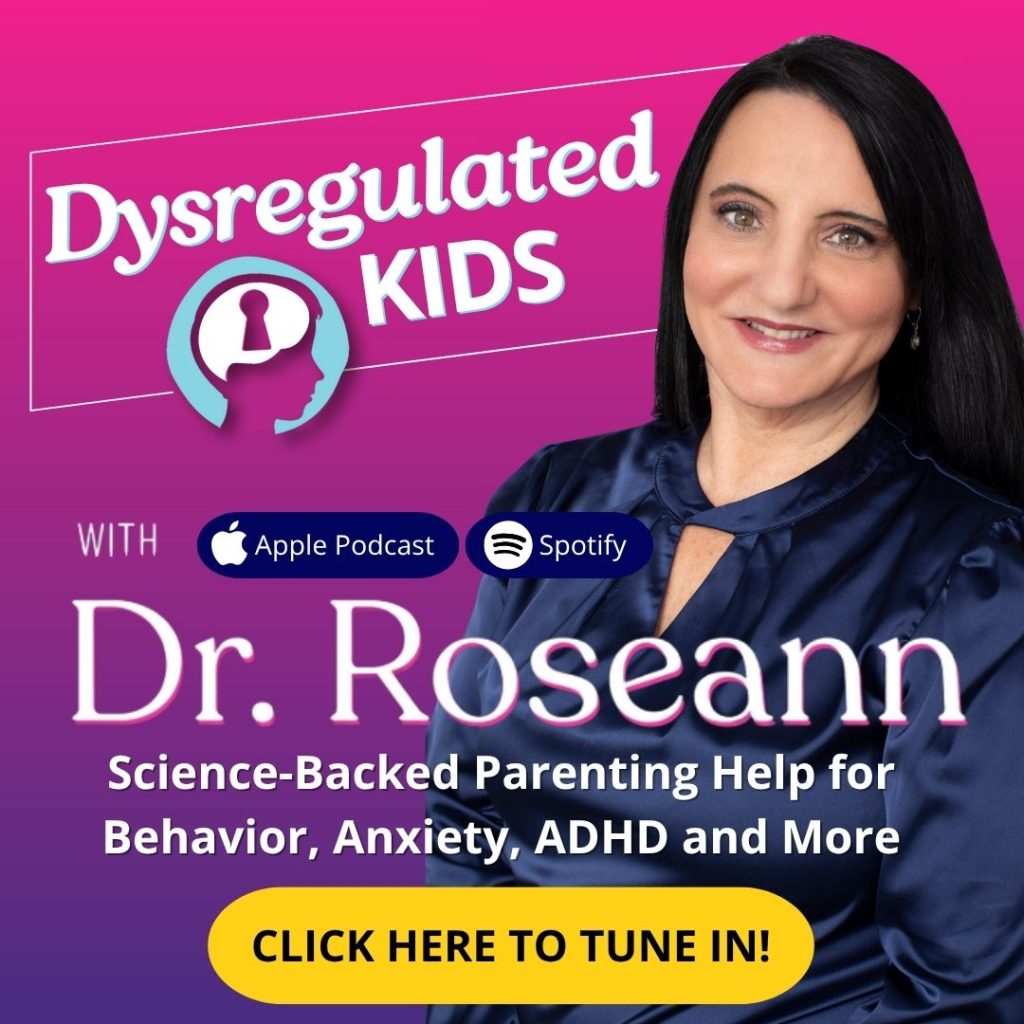Estimated reading time: 7 minutes
If every school day feels like a tug-of-war between your child’s potential and their attention span, take a breath — you’re not failing, and neither is your child.
So many of the families I work with describe the same pattern: bright, creative kids whose ADHD symptoms make the classroom feel like a battlefield. That’s why 504 accommodations for ADHD students are such a powerful bridge — they don’t lower expectations; they open doors.
In this guide, I’ll walk you through how to build a 504 plan that actually works — one that supports your child’s focus, confidence, and calm instead of fighting their brain.
Who Is Eligible for a 504 Plan When a Child Has ADHD?
One of the first questions I often hear from parents is: “Does my child even qualify for a 504 plan?”
Under Section 504 of the Rehabilitation Act of 1973, a student qualifies if a physical or mental condition substantially limits one or more major life activities — things like concentrating, learning, or organizing.
So, if your child’s ADHD symptoms make it hard to focus, complete work on time, or stay organized, they’re likely eligible. You’ll just need documentation showing how ADHD impacts daily school functioning.
Here’s how I explain it to parents:
- A 504 plan isn’t about lowering expectations. It’s about removing barriers so your child can demonstrate what they truly know.
- You don’t need special-education services to qualify.
Requesting for a 504 Plan for your child is not asking for favors, rather, you’re asking for fairness.
Types of Accommodations That Can Be Included in a 504 Plan for ADHD Students
When I help parents build 504 plans, I always say: “Let’s tailor supports to how your child’s brain works—not how we wish it would.”
Here are some of the most effective ADHD classroom accommodations I’ve seen work wonders:
- Extended time on tests and assignments
- Preferential seating (near the teacher or away from distractions)
- Movement breaks to help reset attention
- Visual aids and step-by-step written instructions
- Use of technology such as speech-to-text or audiobooks
- Chunked assignments instead of large tasks
- Organization tools like checklists or color-coded folders
- Alternative testing spaces for reduced distractions
Research tells us that giving accommodations isn’t the same as using them effectively. In fact, a 2025 study found that less than half of students with ADHD actually used their extended time accommodations—and only those who did saw real improvements in performance (Bernard & Witmer, 2025).
That’s why I always remind parents: the 504 plan only works when the supports are actively practiced and monitored.
It’s not about what’s written on paper—it’s about what’s happening in real classrooms and daily routines.

Takeaway: ADHD accommodations work best when they support regulation, not just academics.
When and How to Request a 504 Plan for Your Child
Don’t wait until your child is drowning in missed work or detentions to start this process. You can request a 504 plan as soon as ADHD symptoms start impacting school performance.
Here’s the process I recommend:
- Gather documentation — testing, teacher notes, report cards, work samples.
- Write a formal letter to your school’s 504 coordinator requesting an evaluation.
- Prepare for the meeting — list your child’s biggest school challenges and how they show up (e.g., “needs frequent redirection,” “struggles with transitions”).
- Collaborate with empathy — remember, most teachers want to help but need guidance on how.
Parent story:
Priya’s daughter kept getting marked as “off-task” in class, and it broke her heart because she knew it wasn’t defiance — it was dysregulation.
When Priya brought those patterns to the 504 meeting, the team finally understood what her child needed. Together, they shifted the focus from fixing behavior to supporting the environment—and that made all the difference.
Takeaway:
You are your child’s best advocate. Don’t wait for the school to notice; start the conversation.

How to Write Effective 504 Accommodations That Actually Help
A 504 plan is only as strong as its language. If it’s vague, it’s easy for things to slip through the cracks.
Here’s what I always tell parents when reviewing their draft plans:
- Be specific. Instead of “allow breaks,” write “student may take a 2-minute movement break after 20 minutes of work.”
- Link each support to a need. (“Due to slower processing speed…”).
- Clarify who implements it. (Teacher, counselor, aide, etc.)
- Set review dates to keep the plan current.
Recent research backs this up. A 2024 study found that accommodations alone don’t guarantee better grades for students with ADHD — what really makes the difference is when the support matches the child’s unique executive-functioning profile (Tufty et al., 2024).
In other words, we can’t rely on cookie-cutter checklists. Every brain processes information and stress differently, and the best 504 plans reflect that individuality.
Parent story:
Jessica’s son had “preferential seating” in his first plan—but no one knew where that meant. Once we revised it to “seat near teacher and away from the door,” the distraction level dropped immediately.
Takeaway:
The more concrete the language, the more consistent the support.
Where Do Behavior Supports and Executive Functioning Strategies Fit Into a 504 Plan?
ADHD isn’t just about focus—it’s about executive functioning and emotional regulation. I often remind parents: Behavior is communication. If your child acts out or shuts down, their brain is signaling stress.
Your 504 plan should address these areas too. Consider adding:
- Daily check-ins or planner reviews with a teacher
- Visual checklists for multi-step tasks
- Clear routines for transitions
- Movement or sensory breaks
- Gentle cueing before transitions
Research continues to show that accommodations work best when they’re woven into the fabric of the school day—not tacked on as an afterthought.
A 2024 study by Fabiano and colleagues (2024) found that ADHD supports are most effective when they’re part of a broader, consistent system that includes behavioral and executive-function strategies throughout the classroom.
And there’s even more encouraging news. A 2025 review confirmed that when accommodations are intentionally designed to support self-regulation and task engagement, students with ADHD make meaningful progress (Kates & LaFreniere, 2025).
I see the same thing every day in my practice — when we calm the nervous system and teach executive-function skills, kids don’t just cope better; they thrive.
How to Collaborate With Teachers to Make the Plan Work Day-To-Day
I can’t stress this enough: A great 504 plan is a living document. It only works if the adults around your child understand and apply it consistently.
Here’s what I recommend:
- Meet with the teacher early each semester.
- Keep communication open—weekly check-ins work wonders.
- Ask for small wins to be noticed (“He remembered his planner today!”).
- Model calm collaboration instead of conflict—it builds trust fast.
Research consistently reminds us that relationships matter just as much as accommodations. When teachers truly understand ADHD and approach kids with patience and curiosity, everything shifts.
A 2025 review found that educational accommodations, when paired with strong teacher-student relationships, can significantly boost both learning outcomes and emotional well-being (Giannakopoulos, 2025). It’s such an important reminder that compassion isn’t just kind — it’s effective.
Parent story:
Linda’s daughter was easily distracted. Once the teacher and parent agreed to weekly emails, they caught problems early—before they snowballed.
Takeaway:
You and the teacher are on the same team. The 504 plan bridges understanding, not opposition.
How to Monitor and Update 504 Accommodations as My Child Grows
Our kids’ needs change as fast as their shoe sizes. The plan that worked in 4th grade might not fit by middle school.
I always tell parents: Review the plan at least once a year—and anytime your child’s challenges or environment shifts.
Checklist for review:
- Are accommodations still working?
- Is the child more independent now?
- Do teachers need new training or reminders?
Is emotional regulation improving? - Does your child feel understood and supported?
Signs the 504 plan is working:
| Area of Growth | What You Should Notice |
| Focus & Attention | Fewer reminders needed from teachers |
| Emotional Regulation | Fewer meltdowns or shutdowns after school |
| Academic Performance | More consistent homework completion |
| Teacher Feedback | Positive notes instead of constant redirections |
| Child’s Confidence | More willingness to try difficult tasks |
Summary & Next Steps
Creating and maintaining 504 accommodations for ADHD students is one of the most powerful steps you can take as a parent. It’s about understanding your child’s unique brain and helping the school do the same.
The goal isn’t perfection—it’s progress. Every small adjustment that supports focus, confidence, or calm is a win.
✨ You’ve got this—and it’s gonna be OK.
FAQs
Do I need a formal ADHD diagnosis before I can ask for a 504 plan?
No, but having documentation helps. If ADHD symptoms are clearly impacting your child’s learning or behavior, you can still request a 504 evaluation.
What if the school says my child is “doing fine”?
Grades don’t tell the whole story. If your child is struggling to stay organized, focused, or calm, you can still advocate for support through a 504 plan.
Can we change the 504 plan midyear?
Yes! A 504 plan can be updated anytime if an accommodation isn’t working or your child’s needs change.
How do I know if the accommodations are helping?
You should see fewer meltdowns, smoother homework routines, and better focus. Ask teachers how often the supports are used and if they notice improvement.
What if my child doesn’t want to use the accommodations?
That’s common. Involve your child in choosing what feels helpful. When they feel ownership, they’re more likely to use the supports.
Citations
Bernard, R., & Witmer, S. (2025). Examining how students with ADHD use an extended time accommodation on a low-stakes math assessment. J Atten Disord. 10:803-816. https://doi.org/10.1177/10870547251332046
Tufty, L., Gallagher, V., Oddo, L., Vasko, J., Chronis-Tuscano, A., and Meinzer, M. (2024). Academic accommodations and functioning in college students with Attention-Deficit/Hyperactivity Disorder: limitations, barriers, and suggestions for collaborators. J Postsecond Ed and Disab, 37(1): 35-46. Retrieved from https://files.eric.ed.gov/fulltext/EJ1435041.pdf
Fabiano, G. A., Lupas, K., Merrill, B., Schatz, N., Piscitello, J., Robertson, E. and Pellham JR, W. (2025). Reconceptualizing the approach to supporting students with Attention-Deficit/Hyperactivity Disorder in school settings. J Sch Pscyhol. 104:101309. https://doi.org/10.1016/j.jsp.2024.101309
Kates, M. & LaFreniere, L. (2025). School-based interventions for Attention-Deficit/Hyperactivity Disorder (ADHD) in middle schools: a review of the literature. Educ Sci 15(9):1225. https://doi.org/10.3390/educsci15091225
Giannakopoulos, A. (2025). Adolescents with ADHD in the school environment: a comprehensive review of academic, social, and emotional challenges and interventions. J Clin Images and Med Case Rep, 6. www.doi.org/10.52768/2766-7820/3528
Always remember… “Calm Brain, Happy Family™”
Disclaimer: This article is not intended to provide health advice. It is recommended to consult with a physician before beginning any new wellness program. The effectiveness of diagnosis and treatment varies by patient and condition. Dr. Roseann Capanna-Hodge, LLC does not guarantee specific results.
Are you looking for SOLUTIONS for your struggling child or teen?
Dr. Roseann and her team are all about science-backed solutions—so you are in the right place!
©Roseann Capanna-Hodge










